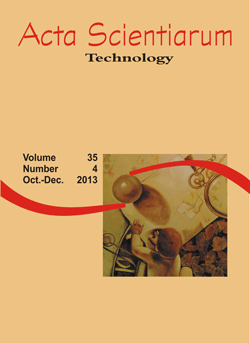<b>Kinetics of the simultaneous production of b- and g-cyclodextrins catalyzed by CGTase from alkalophilic <i>Bacillus</i> sp.</b> - doi: 10.4025/actascitechnol.v35i4.13944
DOI:
https://doi.org/10.4025/actascitechnol.v35i4.13944Keywords:
cyclic oligosaccharides, cyclization, enzyme kinetics, inclusion complexes, , intramolecular transglycosylationAbstract
The cyclodextrins (CDs) are cyclic maltooligosaccharides obtained by cyclization of linear chains of starch, catalyzed by the enzyme cyclomaltodextringlucanotransferase (CGTase). The interest in CD production results from the formation of inclusion complexes, which allow many important applications, especially in food, pharmaceutical and cosmetic industries. The substances complexed generally have their properties modified by complexation. It is appreciated if increased solubility and higher thermal and chemical stabilities are obtained. In this work, a kinetic model was developed for the production of cyclodextrins in the presence of CGTase from alkalophilic Bacillus sp., taking into account the reversibility of the cyclization reaction, the simultaneous production of b and g-CD and also the inhibitory influence of the substrate and products (CDs), on the enzymatic activity of the CGTase. The substrate formed from a solution of maltodextrins was treated as a single substrate. The model was compared with experimental results of 24h of reaction and this comparison demonstrated that there was a very good representation of the data throughout the test period. The model also allowed explaining the observation of different experimental values for each Michaelis-Menten constant and substrate inhibition constant for each CD, although the CDs are produced from the same substrate.
Â
Downloads
Downloads
Published
How to Cite
Issue
Section
License
DECLARATION OF ORIGINALITY AND COPYRIGHTS
I Declare that current article is original and has not been submitted for publication, in part or in whole, to any other national or international journal.
The copyrights belong exclusively to the authors. Published content is licensed under Creative Commons Attribution 4.0 (CC BY 4.0) guidelines, which allows sharing (copy and distribution of the material in any medium or format) and adaptation (remix, transform, and build upon the material) for any purpose, even commercially, under the terms of attribution.
Read this link for further information on how to use CC BY 4.0 properly.











8.png)




